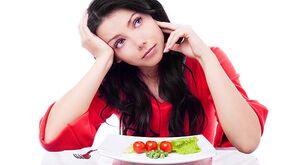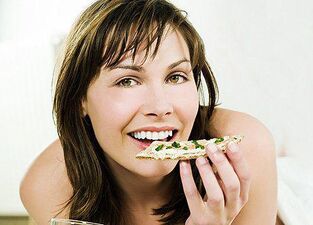Pancreatitis is one of the most serious diseases of the digestive system. Distinguish between acute and chronic pancreatitis, each type has its own characteristics and treatment methods.

Pancreatitis is one of the most serious diseases of the digestive system. Distinguish between acute and chronic pancreatitis, each type has its own characteristics and treatment methods.
But one thing about pancreatitis has not changed: the past lifestyle and nutrition will remain in the past, because the basis of pancreatitis treatment is an almost lifelong diet. The pancreas will not forgive nutritional errors and will immediately respond with pain and indigestion.
Basic knowledge of pancreatitis
Pancreatitis is an acquired disease that develops due to abdominal trauma, rupture of the liver and gallbladder, and viral damage to the pancreas caused by alcohol and other toxic substances. The consequences are frequent and severe nutritional disorders-long-term prohibitionEat, sit down and lose weight on your diet.
The main symptoms of pancreatitis are:
- Abdominal pain-sharp, dagger, almost to the level of loss of consciousness in acute pancreatitis, dull or painful in the chronic version;
- Nausea and vomiting;
- Stool disorder, more serious diarrhea, fever;
- A sharp drop in weight.
Acute pancreatitis is usually hospitalized. Exacerbations of chronic diseases can be treated at home, but only under the guidance of a doctor. Self-medication in the case of pancreatitis is dangerous, because the development of complications can go all the way to pancreatic necrosis (enzymatic digestion of glands, self-digestion of glands) and the development of peritonitis, which is fatal.
Nutritional therapy of pancreatitis
The doctor selected the drugs, enzymes and diet therapy for pancreatitis based on the patient's condition and test data. However, the general principles of dietary correction have always remained roughly the same. They rest digestion and pancreas, which means they can relieve pain and restore health.
The nutrition of pancreatitis is severely restricted-most common products will be forgotten.It is necessary to eat frequently, about 5-6 times a day, every 2. 5-3 hours, with 8 hours of rest. But the volume should be small-about 200-250 g, especially for the first time after the disease gets worse.
All plates are machined-in fact they are used in mud. Then, as the inflammation subsides, larger particles will appear in the food, but you need to chew the food thoroughly.
Due to the insufficient nutritional supply of the whole person in pancreatitis,needs to increase the protein content of the diet (meat, fish, dairy products)-an average of 140-150 g protein per day.
But fats and carbohydrates that put great pressure on the pancreas are kept to a minimum. Approximately 300 grams of carbohydrates and fat-no more than 70-80 grams per day.
Dietary products-meat and fish broth, cabbage juice and broth-have been removed from the diet; for the duration of severe pain episodes, it is recommended to fast for 1-2 days under the supervision of a doctor.
If it is pancreatitis, it is necessary to drink more water-It is recommended to drink up to 2 liters of purified water a day, and drink 2-3 mouthfuls of water about every half an hour.

Naturally, when you have pancreatitis, you must completely stop smoking and drinking. They are the most powerful epileptic authors.
What to exclude?
The list of prohibited foods will be very impressive and may be frustrating at first. However, in the case of non-compliance with these restrictions, a long period of relief can be expected. Following the general principles of good nutrition, you can gradually expand your diet gradually.
Therefore, for the entire acute phase or when the chronic disease worsens, it is necessary to exclude:
- Beetroot soup, cabbage soup and borscht, okroshka, broth, mushroom and fish soup, broth itself;
- Fatty meat-pork, lamb, goose and duck;
- Internal organs-kidney, heart, brain, liver;
- Fried, smoked, salty and spicy food;
- Canned food;
- sausage;
- Fatty fish (cat fish, star-shaped st fish, carp); caviar;
- lard, margarine, mayonnaise;
- Fatty dairy products-cream, sour cream, koumiss;
- Egg yolk, boiled egg;
- Millet, corn, barley, bean side dishes;
- Cabbage, turnip, turnip, turnip, kohlrabi, eggplant, onion and garlic, sorrel, cucumber, tomato and sweet pepper;
- Citrus, apple (sour variety), grape, pomegranate, cranberry;
- Chocolate, candied fruit;
- Hot strips, seasoning sauce, marinade, vinegar, tomato sauce;
- All carbonated drinks, even mineral water (you can only have no gas);
- Strong tea and coffee, juice, cocoa;
- All fresh baked goods and pastries, pancakes, pies, shortbread.
As you can see, the list of restrictions is quite large, but this only applies to the duration of the acute process. Then gradually, you can gradually expand your diet, but the annoying and "heavy" dishes will have to be forgotten forever.
What can you eat?
This is the first question after reading the ban list. Of course, the diet is not very diverse, but the goal is to keep the pancreas calm and reduce inflammation.

Allowed:
- Yesterday’s dry bread, biscuits;
- Vegetable and noodle soup;
- Steamed meats and poultry-meatloaf, meatballs, bread rolls, meat sauce, meat puree;
- Boiled fish fillet (lean), grilled fish, omelet
- Vegetable oil and butter (in porridge);
- Vegetable puree and stew, boiled vegetables;
- Pasta, noodles, cereals-oatmeal, semolina, buckwheat, rice;
- Unsweetened baked fruits (pea, apple, peach, plum);
- Jelly, jelly, jelly;
- Rose hip soup, herbal tea, bran beverage.
Of course, the diet is limited, but after consulting with your doctor, you will gradually expand the menu.
Sample menu
It is worth remembering that this menu can be used at home when the acute attack is reduced, the acute phase of pancreatitis, fasting and gradual eating. When formulating dietary habits, remember: There should be at least five meals with approximately the same calorie content and digestive load.
Pancreatitis 5 days menu
First day
- Breakfast: mashed potatoes -100-150 grams, 2 croutons of white bread, 200 ml of mineral water (no gas! ).
- The second breakfast: steamed chicken chop-100g, omelet-100g, white dry bread-1 slice, 200ml milk (kefir)
- Lunch: vegetable soup-200 ml, boiled fish-100 grams, zucchini paste-100 grams, white bread-1 slice, rose hip broth-200 ml, one third of banana.
- Afternoon snack: jelly-100 grams, non-fat cheese-100 grams, mineral water-200 ml.
- Dinner: oatmeal-200 grams, pumpkin puree-100 grams, steam meatballs -2, evaporated milk tea and a piece of black bread.
The next day
- Breakfast: buckwheat porridge-200 grams, white bread 2 croutons, 200 ml milk tea.
- The second breakfast: steamed beef patties-100 grams, carrot souffle-200 grams, dry white bread-1 slice, and 200 ml of dried fruit preserves.
- Lunch: noodle soup-200ml, boiled chicken-100g, vegetable puree-100g, white bread-1 slice, mineral water-200ml, half a roasted pear.
- Afternoon snack: applesauce-200g, mineral water-200ml, Maria biscuits-100g.
- Dinner: Mashed potatoes-200 grams, low-fat cheese-100 grams, cheese sandwich (30 grams of cheese, a piece of toast), evaporated milk tea and a piece of black bread.
Day 3
- Breakfast: pumpkin and pumpkin puree -100-150g, 2 croutons of white bread, 200ml of mineral water (no gas! ).
- The second breakfast: low-fat cheese-100 grams, half a roasted pear, white dry bread-1 slice, 200 ml candied fruit.
- Lunch: Broccoli soup-200 ml, cooked meat, grated with mashed potatoes-100 grams, mashed potatoes-100 grams, white bread-1 slice, chamomile tea-200 ml.
- Afternoon snack: stewed vegetables-200 grams, cheese-50 grams, and mineral water-200 ml.
- Dinner: Buckwheat porridge-200 grams, kefir-200 grams, half a banana, a slice of white bread.
Fourth day
- Breakfast: mashed potatoes -100-150 grams, 2 croutons of white bread, 200 ml of mineral water (no gas! ).
- The second breakfast: porridge-200 grams, dry white bread-1 slice, 200 ml of milk (kefir).
- Lunch: vegetable soup-200 ml, boiled fish-100 grams, carrot puree-100 grams, white bread-1 slice, rose hip broth-200 ml, one third of bananas.
- Afternoon snack: omelet-100 grams, roasted sweet apples, and mineral water-200 ml.
- Dinner: oatmeal-200 grams, pumpkin puree-100 grams, steam meatballs -2, evaporated milk tea and a piece of black bread.
Fifth day
- Breakfast: oatmeal-200 grams, pumpkin puree-100 grams, steam meatballs -2, weak tea with milk, a piece of black bread.
- The second breakfast: steamed chicken chop-100g, omelet-100g, white dry bread-1 slice, 200ml milk (kefir)
- Lunch: Spaghetti soup-200ml, steamed fish fillet-100g, carrot and pumpkin puree-100g, white bread-1 slice, rosehip broth-200ml, Maria biscuits-2.
- Afternoon snack: baked fruit-100 grams, non-fat cheese-100 grams, mineral water-200 ml.
- Dinner: mashed potatoes-100-150 grams, 2 croutons of white bread, 200 ml of mineral water (still! ).
Following the doctor’s advice, strictly following the diet and following all prescriptions, relief can be achieved quickly. But a fairly strict diet restricting "heavy" foods will last 3 to 6 months. Then you will constantly need to limit fat, fried, spices and canned food.





















